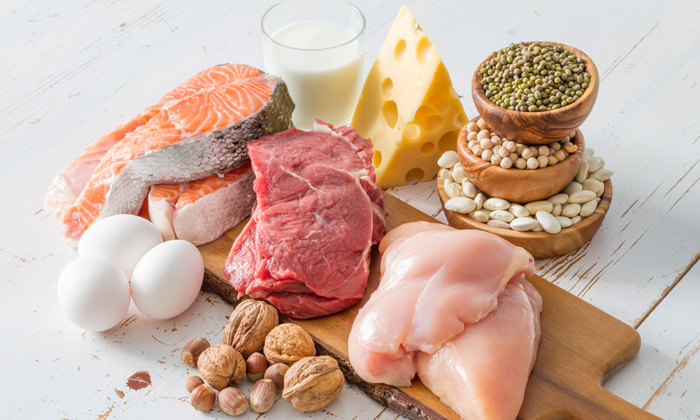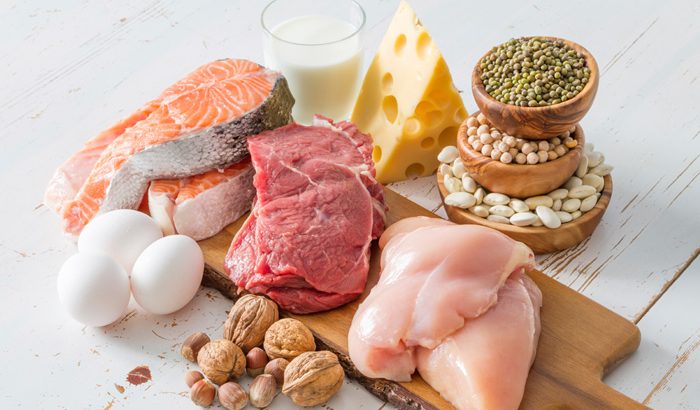
The proteins in our food come from animal (meat, poultry, seafood, dairy) as well as vegetable (beans, peas, soy products, nuts, grains) sources. Everybody needs protein, but most people already eat enough, and some, more than enough. How much is enough? Most people over the age of 9 should ingest between 140 and 200 grams (approximately, 5 to 7 oz.) of food protein daily.
1.- Make proteins tastier and healthier: try grilling, roasting, or broiling meat, since these cooking methods don’t add extra fat. Some lean meats require slow cooking and liquid to achieve tenderness. Also, avoid battering beef and poultry, as this leads to more calories.
2.- Vary your protein sources: eat a variety of foods from the protein category weekly. Try preparing dishes with beans and other legumes, nuts, soy, fish and seafood.
3.- Eat fish and seafood twice a week: pick them over beef and poultry. Vary the kinds of fish and seafood you consume, and make sure to add those that are richer in oils and have lower mercury levels, like salmon, trout and herring.
4.- Choose leaner meat and poultry: Select cuts that are low in fat, such as shoulder or tenderloin, and ground beef that is at least 90% lean. Trim or drain fat from meat and remove poultry skin.
5.- Eat eggs: an egg a day doesn’t increase the risk of heart disease, so go ahead and add them to your list of weekly options. Only the yolk contains cholesterol and saturated fat, which means you can eat as many egg whites as you wish.
6.- Eat vegetable protein more frequently: try legumes (red kidney beans, white and pinto beans, chickpeas, chickpea purée), soy products (tofu, veggie burgers), nuts, and grains. They are naturally low in saturated fat and contain lots of fiber.
7.- Nuts and grains: choose them without salt as a snack, or add them to your salads and entrées as an alternative to meat and poultry. Nuts and grains are concentrated sources of calories; therefore you should have them in smaller portions and always keep an eye on calories.
8.- Make yourself a healthy sandwich: use turkey, roast beef, canned tuna or salmon, or peanut butter. Many cold cuts, such as smoked sausage and salami, contain high levels of fat and sodium. Eat them only as an occasional treat.
9.- Eat meat in low quantities: you can enjoy your favorite variety, just less of it. Cook or order a smaller burger or a ‘filet mignon’-style cut.
10.- Verify sodium amounts: limit sodium by reading the nutrition facts label. Most canned foods, including beans and meat, contain added salt. Processed meats, like most cold cuts, are high in sodium. And some chicken, turkey and pork cuts are marinated in a salty solution to add flavor and tenderness.

